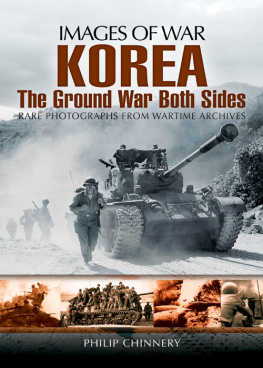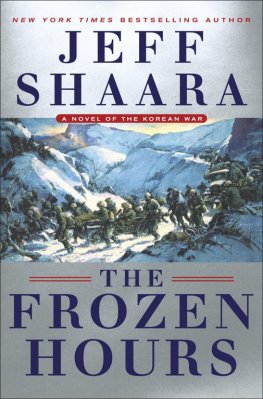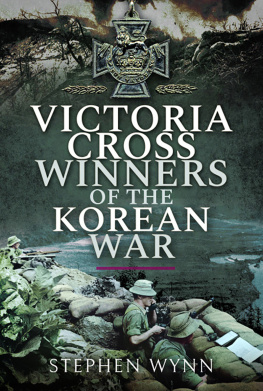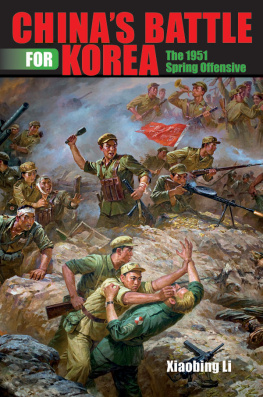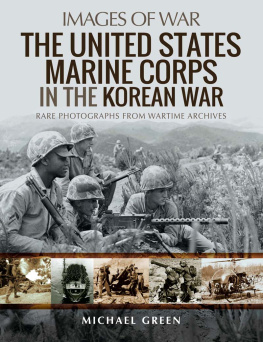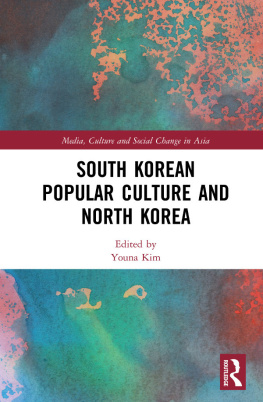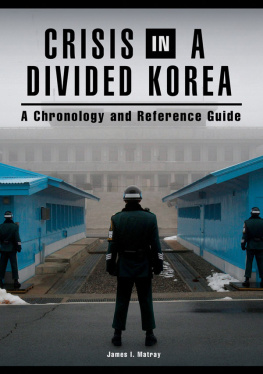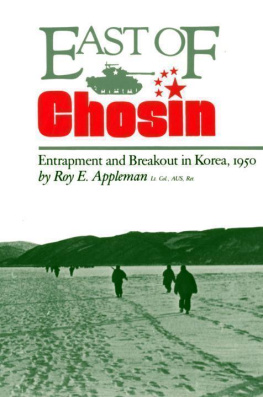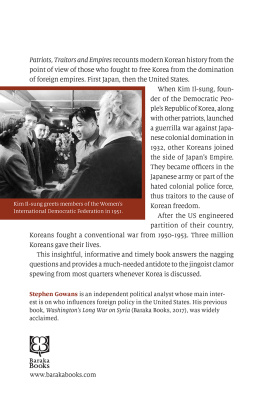
First published in Great Britain in 2013 by
PEN & SWORD MILITARY
An imprint of
Pen & Sword Books Ltd
47 Church Street
Barnsley
South Yorkshire
S70 2AS
Copyright Philip Chinnery, 2013
ISBN 978-1-84884-819-1
ISBN 9781783400331 (epub)
ISBN 9781783400072 (prc)
The right of Philip Chinnery to be identified as author of this work has been asserted by him in accordance with the Copyright, Designs and Patents Act 1988.
A CIP catalogue record for this book is available from the British Library.
All rights reserved. No part of this book may be reproduced or transmitted in any form or by any means, electronic or mechanical including photocopying, recording or by any information storage and retrieval system, without permission from the Publisher in writing.
Typeset by Concept, Huddersfield, West Yorkshire
Printed and bound in England by CPI Group (UK) Ltd, Croydon, CR0 4YY.
Pen & Sword Books Ltd incorporates the Imprints of Pen & Sword Aviation, Pen & Sword Family History, Pen & Sword Maritime, Pen & Sword Military, Pen & Sword Discovery, Wharncliffe Local History, Wharncliffe True Crime, Wharncliffe Transport, Pen & Sword Select, Pen & Sword Military Classics, Leo Cooper, The Praetorian Press, Remember When, Seaforth Publishing and Frontline Publishing.
For a complete list of Pen & Sword titles please contact
PEN & SWORD BOOKS LIMITED
47 Church Street, Barnsley, South Yorkshire, S70 2AS, England
E-mail:
Website: www.pen-and-sword.co.uk
Contents
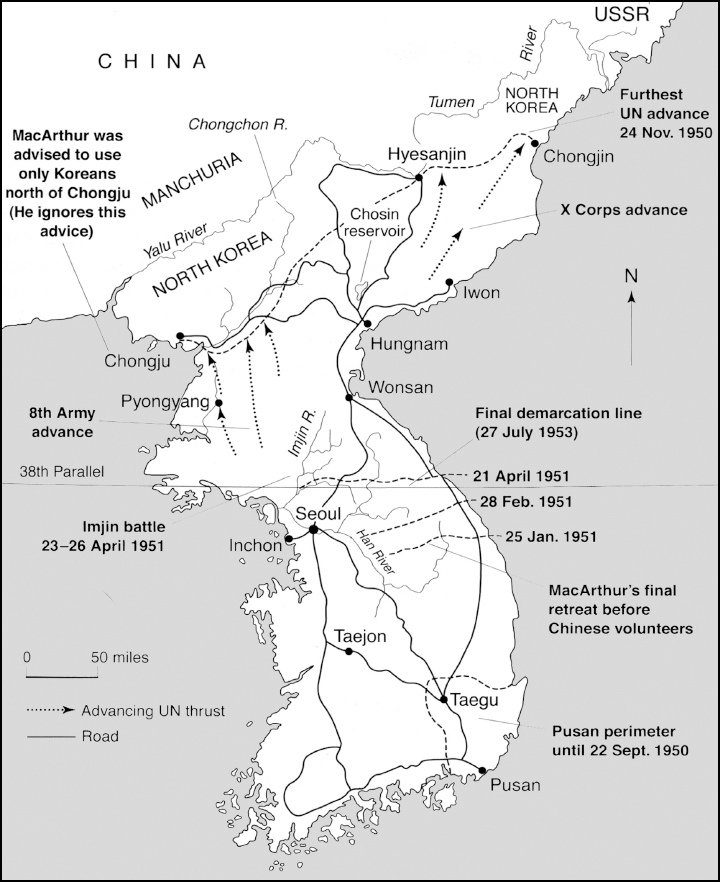
Introduction
T his book is my third on the subject of the Korean War and is aimed at telling the story of the ground war from the view of both participants: the Communists (North Korea, China and the Soviet Union) and the United Nations (South Korea, United States and the Allied Nations).
The Korean War of 195053 was a war of heavy casualties and much suffering. When the Chinese joined the war five months after it began, they employed human wave tactics which were often very successful but very costly in terms of manpower. The American GI on the other hand, was out of his depth in Korea; young, inexperienced in the art of war and initially poorly equipped, thousands perished on the battlefield and many hundreds more surrendered, only to succumb to the harsh conditions in the prisoner of war camps.
Hundreds of thousands of civilians were made homeless by the fighting which swept up and down the peninsula and their plight was pitiful. Trudging along in all weathers, seeking food and shelter, they were pushed off the main roads by the military and often killed at random by North or South Korean troops or Police if they were suspected of being sympathetic to either side. The United States was responsible for a large part of the refugee problem, with their indiscriminate bombing campaigns which laid many towns and cities to waste.
The Communists on the other hand, would force civilians and captured South Korean soldiers to join the ranks of their depleted divisions and then drive them into battle. They had employed the Soviet system of using commissars to drive the infantry forward, with a bullet waiting for any soldier who tried to turn around and retreat. They would be used as cannon fodder, to die in droves while the enemy used up his ammunition thus clearing the way for the better armed and experienced troops to overrun the enemy positions.
We will compare the tactics used by both sides and the weapons that they used: the Americans who would abandon huge amounts of supplies and vehicles on the battlefield and the Chinese who went into battle with weapons captured from the Japanese during the Second World War.
Rations played an important part in the success of the campaigns. The UN troops were well fed, whereas the Chinese carried dry rations and never more than enough for four or five days fighting. The Americans used vast fleets of trucks and transport aircraft to move their supplies around; the Chinese generally carried theirs on their backs or by pack horses.
The treatment of prisoners on both sides of the fence could not have been more different. The Chinese were not expecting the large number of prisoners that fell into their hands and in the early days did not have the ability to feed or house them. Hundreds died on the march or in the camps during the first year of the war. In the South, thousands of Chinese prisoners had originally fought for the Chinese Nationalists in the civil war and had been taken prisoner and conscripted into the Chinese Army. Now, given the opportunity, they would prefer to go to Formosa rather than back to China.
Photographs taken during the war by South and North Korean photographers are few and far between. Photos taken by Chinese photographers are more easily sourced, but the quality varies and most are taken from a propaganda point of view. The United Nations forces, principally the United States, had plenty of photographers and the quantity and quality of available material far exceeds that of the Communist side.
The reader is asked to accept what is available and to appreciate this effort to illustrate both sides of the Korean War. It was a war of a type that will hopefully not occur again, but with a belligerent government still in control in North Korea, the possibility of a return to those awful days is still on the cards.
Philip Chinnery
East Sussex 2012
Chapter One
On the Verge of Defeat
June September 1950
F ollowing the defeat of the Japanese and the end of the Second World War, the Korean peninsula had been occupied in the North by the Soviet Union and in the South by the United States. The two halves of the country were partitioned at the 38th Parallel. In 1948 the Republic of Korea was established in the South, ruled by Syngman Rhee whose declared objective was the reunification of Korea as a non-communist state. A month later the Democratic Peoples Republic of Korea was established in the North, led by Kim II Sung. Elections should have been held to reunite the country, but never took place. By 1949 American combat forces had withdrawn from Korea, but left a military advisor group to assist the ROK army. The Soviet Union however, took an active role in governing North Korea and in early 1950 supplied weapons and several thousand soldiers to train the North Korean Army. Armed clashes were common along the 38th Parallel, but in 1950 US observers did not anticipate an invasion of the South. In January 1950 US Secretary of State Dean Acheson announced an American defensive strategy in the Far East that excluded both Korea and the Nationalist Chinese island of Formosa. It sent a clear signal to the DPRK that Syngman Rhee was on his own.
Colonel Paik Sun Yup was fast asleep when the telephone rang. His breathless G-3 was at the other end: The North Koreans have invaded! They're attacking all along the parallel! The situation in Kaesong is chaotic, and I'm afraid the city already may have fallen. It was 0700 hours on Sunday, 25 June 1950. Colonel Paik was the commander of the 1st Republic of Korea (ROK) Division, protector of Seoul, the capital of South Korea. He was twenty-nine years old. He was also away from his 10,000-man division, on a senior officer training course at the Infantry School in Seoul.
By the time Paik rejoined his division they were in contact with the 1st North Korean Division supported by tanks from the 105th Armoured Brigade. The 1st ROK Division was at the western end of the four divisions tasked with defending the 240 mile long imaginary line which was known as the 38th Parallel and formed the frontier between the two countries. Their section of the line was fifty-six miles long and impossible to defend, so Paik reduced it to nineteen miles by establishing his defences along the Imjin River. However, this meant that Kaesong was left open to the invaders and it fell within hours, with the 12th Regiment falling back in disarray.
Next page
